News 12/4/13
Top News
Hearst Corporation will acquire 85 percent of Homecare Homebase, the #1 KLAS-ranked software provider for the homecare and hospice market. Hearst’s other healthcare IT companies include First Databank, Map of Medicine, MCG, and Zynx Health.
Reader Comments
From N2InformaticsRN: “Re: CAP Consulting. The College of American Pathologists is dissolving CAP Consulting, its informatics consulting practice. This is the group that was doing exceptional work in terminology and standards with a deep understanding of the information needs and challenges faced by providers across the health care delivery and laboratory spectrum. More recently they developed an effective framework to assess and tackle health information management. The team has unique skill sets and helped us ensure ontological correctness by developing a terminology roadmap. It will be interesting to see who picks these folks up or whether they form a consulting group on their own.” Unverified. We have a call scheduled for Wednesday with CAP Consulting to learn more.
HIStalk Announcements and Requests
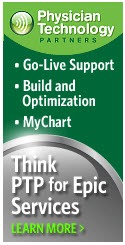
Welcome to new HIStalk Platinum Sponsor Physician Technology Partners. The physician-owned and led consulting company offers provider-to-provider services that make Epic-using physicians more productive. Its physician champions hold ASAP and EpicCare Ambulatory certifications. PTP’s six-phase approach to building to optimize for quicker ROI includes strategic planning, implementation, build and validation, training, go-live support, and optimization. They’ve done it for customers that include Ohio State, UCSF, Sutter, Exempla, Texas Children’s, Providence, University of Miami, and a bunch more names you would know. PTP’s expertise also includes making Dragon speech recognition work optimally in an Epic environment. Thanks to Physician Technology Partners for supporting HIStalk.
I have an interesting challenge with HIStalkapalooza. Jonathan Bush has a conflict and, for the first time since the inaugural HIStalkapalooza in 2008, we may need to find someone else to present the HISsies awards (travesty, I know.) I need someone who has commanding stage presence, a wicked sense of humor, and a cynical view of healthcare IT (extra points for being able to swig large-format bottles of high-gravity beer while uttering a non-stop stream of one-liners during the otherwise august proceedings.) Let me know if you’ve seen anyone who can approximate JB’s on-stage magic since otherwise Inga’s going to have to get up there and she will be terrified.
Acquisitions, Funding, Business, and Stock
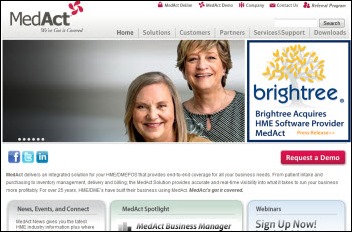
Post-acute care software provider Brightree acquires MedAct LLC, a developer of home medical equipment and DME software solutions.
Entrada, a developer of workflow products that are integrated with EHRs from athenahealth, Allscripts, Greenway, and NextGen, raises $1.12 million in new equity.
Shareable Ink closes $10.7 million in Series C financing and names former Allscripts CEO Glen Tullman to its board.
Lexmark will consolidate four acquired businesses — Pacsgear, Saperion, Twistage, and Acuo Technologies — under its Perceptive Software subsidiary.
Sales
AnMed Health (SC) will implement technology from Iatric Systems to integrate multiple hospital and departmental systems.
The Metropolitan Chicago Healthcare Council selects HIE technology from Sandlot Solutions.
Children’s National Medical Center (DC) will deploy Streamline Health’s OpportunityAnyWare business analytics software suite.
People
Kristina Greene (Proxicom) joins Lucca Consulting Group as RVP.
Acusis names Richard Simonetti (Horiba Medical) VP of strategic business solutions.
Kareo hires Amyra Rand (HireRight) as VP of sales.
Perigen appoints Chip Long (Merge Healthcare) SVP of growth and development.
RCM service provider MedData appoints Paul Holland (QuadraMed) VP of sales and Carl Naso (Aleris International) corporate controller.
Stephen Bernard (Accretive Health) joins Connance as VP of professional services.
Valence Health names Nathan Gunn, MD (Verisk Health) VP of population health and Dan Blake (AirStrip Technologies) SVP of software product development.
KLAS names six members to its first-ever imaging advisory board: Mark Christensen (Intermountain Healthcare), Karen McGraner (Exempla St. Joseph Hospital Denver), Eugene V. Pomerantsev (Massachusetts General Hospital), Peter S. Rahko (University of Wisconsin Hospital), Pablo Ros (University Hospitals HS Cleveland), and Brian Wetzel (Our Lady of Lourdes Memorial Hospital Binghamton.)
Announcements and Implementations
Pro-Laudo, a teleradiology practice in Brazil, implements eRAD PACS with integrated reporting and speech recognition.
PeaceHealth Medical Group in Longview, WA goes live on Epic.
Hospitals and skilled nursing facilities in California’s Santa Clara county will deploy CareInSync’s Carebook platform to coordinate care transitions.
Cheyenne Regional Medical Center (WY) converts patient information and data from seven legacy systems into a single platform integrated with Epic using Hyland Software’s OnBase ECM solution.
More than 50 Adventist Health/Central Valley Network (CA) facilities go live this week on Cerner.
Martin Health System (FL) deploys the RightPatient iris biometrics patient identification system from M2SYS Healthcare Solutions.
Providence Health & Services (WA) opens a clinic without a waiting room in its first go-live of RTLS from Versus Technology.
UCLA Health System (CA) opens the Lockheed Marking UCLA TeleHealth Suite and Lockheed Martin Outpatient Recovery Suites for Wounded Warriors of Operation Mend, which were made possible by a $4 million gift from Lockheed Martin.
GE Healthcare launches Centricity 360, an online clinical collaboration tool that provides real-time sharing of data.
3M Health Information Systems releases 3M ChartScriptMD Software for Radiology, a reporting application that allows radiologists to create, sign, and distribute complete reports and communicate diagnostic findings from a single, integrated system.
Congratulations to Tampa General Hospital (FL), which VP/CMIO Richard Paula tells me has earned HIMSS EMRAM Level 7 with its $90 million Epic system.
Innovation and Research
Researchers from NORC at the University of Chicago will study how Cerner employees respond to cost transparency tools from Change Healthcare. The RWJF-funded study will assess the impact of price, quality, and engagement approaches on consumer choice of healthcare.
Researchers at the University of Pittsburgh create a publicly searchable digital database of infectious diseases cases dating back 125 years.
Other
The Leapfrog Group publishes its annual list of top hospitals based on quality of care.
Carolinas HealthCare System launches analytics capabilities that integrate data for evidenced-based health management, individualized patient care, and predictive modeling. The health system’s in-house analytics group built the data analytics models and are using de-identified clinical and financial information from 10.5 million patient encounters. I interviewed SVP/CIO Craig RIchardville in September.
Happtique certifies 19 health and medical apps, which requires them to meet privacy, security, and operability standards and pass clinical content testing.
WEDI, EHNAC, and DirectTrust partner to promote and accelerate the adoption of a national accreditation program for information “trusted agent” service providers.
![]() The New York Times highlights the insanity of US hospital charges, including pricing that is often arbitrary; wide variations in pricing for the same service across different facilities and regions; and, heavily inflated prices for routine supplies and services. For example, the average cost of treating a cut finger in an ER ranges from $790 in New England to $1,377 in the Pacific. Also noted: the hefty incomes of many executives in non-profit health systems, including 28 Sutter Medical Center officials who each make more than $1 million a year.
The New York Times highlights the insanity of US hospital charges, including pricing that is often arbitrary; wide variations in pricing for the same service across different facilities and regions; and, heavily inflated prices for routine supplies and services. For example, the average cost of treating a cut finger in an ER ranges from $790 in New England to $1,377 in the Pacific. Also noted: the hefty incomes of many executives in non-profit health systems, including 28 Sutter Medical Center officials who each make more than $1 million a year.
![]() A tone-deaf boy in Denver suffers a concussion playing lacrosse, recovers, and develops the ability to play 13 instruments. His physician theorizes that the musical talent was “latent in his brain and somehow was uncovered by his brain rewiring after the injury.” Sort of gives new meaning to the term, “one-hit wonder.”
A tone-deaf boy in Denver suffers a concussion playing lacrosse, recovers, and develops the ability to play 13 instruments. His physician theorizes that the musical talent was “latent in his brain and somehow was uncovered by his brain rewiring after the injury.” Sort of gives new meaning to the term, “one-hit wonder.”
Crain’s Chicago Business points out that despite the hoopla around the 34 hospitals MetroChicago HIE has announced as members, it has failed so far to sign at least three of the biggest ones: Northwestern, University of Chicago Medicine, and NorthShore.
Weird News Andy finds himself thankful for piercings after reading this story, which describes a joystick-like device implanted as tongue piercing that allows paralyzed people drive their wheelchairs by flicking their tongues.
WNA may have a new competitor, as a reader provided this toothsome morsel of prose. A Swedish prisoner escapes two days before his scheduled release to have a tooth fixed, having been denied service by the prison dentist. He has the tooth removed and then returns to his cell. The prison gives him an oral warning and extends his stay by 24 hours to make up his time.
Sponsor Updates
- Administrators from Nemours Children’s Hospital (FL) explain how Rauland-Borg Corporation, Versus Technology, and GetWellWork integrated their technologies to inform patients about their doctor or nurse as they walk into a patient room.
- Mike Silverstein and Kasey Fahey of Direct Recruiters, Inc. interviewed 21 healthcare IT executives about trends and predictions.
- Capsule Tech joins the Continua Health Alliance.
- Greenway Medical Technologies will integrate data analytic tools from Inovalon into its PrimeSUITE EHR platform.
- AirWatch develops app reputation scanning technology for its platform in support of corporate-owned and BYOD deployments.
- Vital Images showcases clinical enhancements to its VitreaAdvanced software at this week’s RSNA meeting.
- MedAssets shares a video case study highlighting how it helped the Texas Purchasing Coalition achieve $60 million in cost reductions and increase efficiencies.
- Culbert Healthcare Solutions hosts a December 13 webinar on the ICD-10 impact of revenue cycle operations and clinical workflows.
- Quantros offers a December 11 webinar on quality reporting requirements for inpatient psychiatric facilities.
- Nuance adds speech recognition accuracy and workflow enhancements to the PowerScribe 360 platform.
- Beacon Partners publishes a white paper outlining best practices when connecting affiliated physicians to the health system.
- Merge Healthcare releases iConnect Network, an imaging network for the secure electronic exchange of imaging information.
- FUJIFILM Medical Systems introduces Synapse VNA technology and demonstrates Synapse RIS EHR solution at this week’s RSNA meeting.
RSNA Impressions

Deborah Kohn checks in with a high-level reaction to RSNA.
Based on my observations of RSNA 2013’s multitude of imaging informatics products, radiology (and other image-generating “ology” or department) PACS continue to be “deconstructed”.
For example, the “A” in PACS (for Archiving) remains the focus of many Vendor Neutral Archive (VNA) system products. No noteworthy independent (of PACS vendors) VNA products are being introduced this year, and most of the PACS vendor VNA products are trying to catch up to the independents by highlighting new functionality. This year’s newer focus centers on enterprise viewers, which consolidate provider organizations’ large number of disparate clinical system viewers, such as those of the multi-modality PACS (DICOM), Enterprise Content Management (non-DICOM), and even EHR system viewers.
Also moving to the enterprise level are the image share / image exchange capabilities, which include the taking-along of key clinical content down/uploaded from/into the EHR. An impressive Johns Hopkins Medicine work-in-progress at IHE’s Image Sharing Demonstration included Face Time/Skype-like (yet HIPAA secure) video conferencing for consultations and/or second opinions. The remote providers collaborated on diagnostic-quality views of DICOM images with side-by-side, structured EHR data and unstructured text reports – all in one view at the click of a button.
In summary, traditional PACS functionality continues to be siphoned off into other, more robust and often enterprise components, leaving traditional PACS as the important workflow engines for the modalities.
Contacts
Mr. H, Inga, Dr. Jayne, Dr. Gregg, Lt. Dan, Dr. Travis, Lorre
More news: HIStalk Practice, HIStalk Connect.

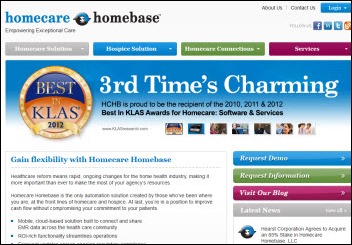
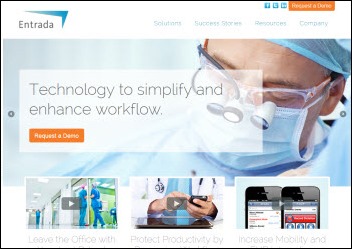



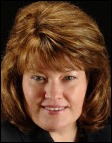
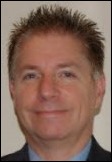

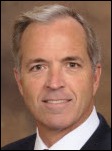
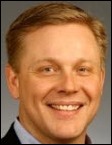
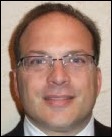


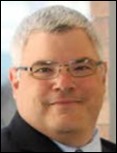





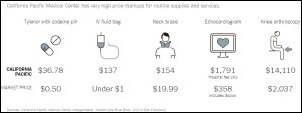




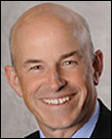
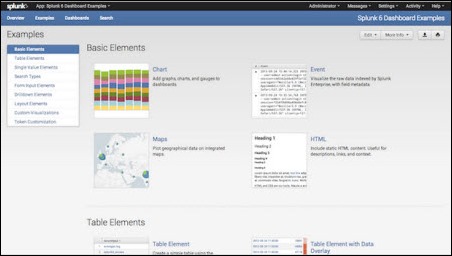
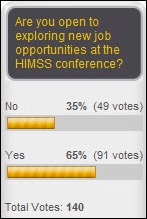










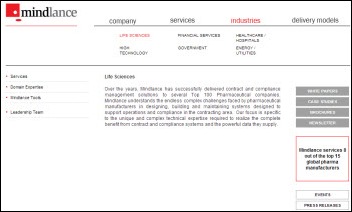


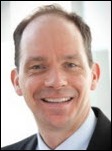









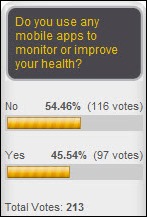












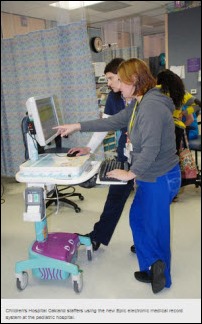



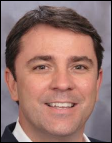
... because it's a construction worksite. (It's a bit more evident from the second photo in the linked post.)